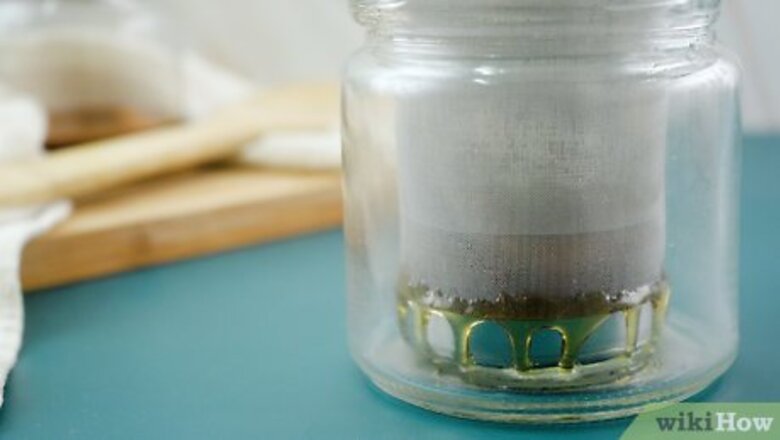
views
Slowing Down Crystallization

Pour unfiltered honey through a 300 micron filter. Honey that you buy in the store is almost always filtered already. However, if you bottle your own honey or you bought it from a local farmer, it may be “raw” or unfiltered. Put a 300 micron filter over the top of a glass jar, and pour your honey through it. The filter will catch pollen and other particles. Crystals often start forming around the particles in unfiltered honey, so you can slow down the crystallization process by filtering raw honey. You can buy a filter online, at a home supply store, or at a beekeeping supply store.
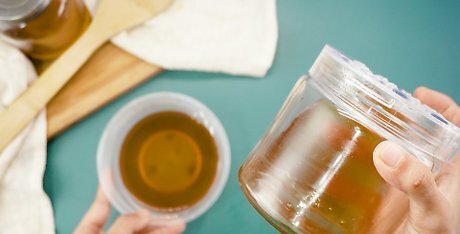
Keep honey in a sealed glass jar, instead of plastic. Plastic lets in more moisture, which leads to crystallization. If you’re bottling your own honey, put it into a glass jar and seal it tightly. If you bought honey in a plastic container, consider moving the honey into a glass jar. Your glass jar should be clean and dry before you put the honey in it.

Store your honey in a cabinet at room temperature. Cool temperatures accelerate honey crystallization, so don’t keep your honey in the refrigerator or in a chilly basement. Temperatures below 50 °F (10 °C) will make your honey crystallize faster. Don’t store the honey at a temperature above 81 °F (27 °C), because that might cause the honey to spoil.
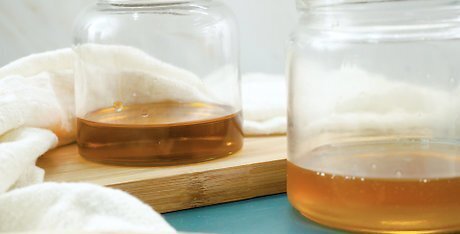
Buy varieties of honey that crystallize more slowly. Honey that's high in glucose will crystallize more quickly than honey that's high in fructose. In some stores or farmer’s markets, you can buy honey that is made from particular flowers that are higher in glucose, instead of just generic honey. If you have a choice, try to buy honey made from acacia, cranberry, gallberry, grape, milkweed, sage, sunflower, or tupelo. Keep in mind that it’s hard to confirm what type of honey is in the jar. Some tests have found that the labels on honey don’t actually correspond to the type of pollen inside.
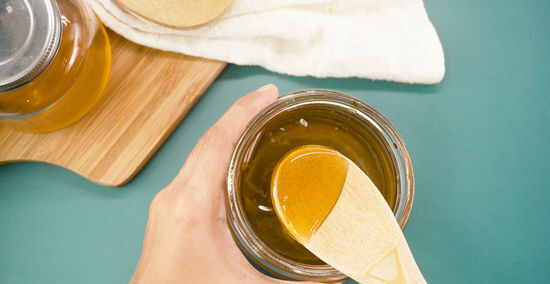
Eat your honey within a month or so. If you want to avoid crystallization, the easiest thing to do is to just eat your honey before it crystallizes. Depending on the type of honey and the storage conditions, your honey may crystallize more quickly or more slowly, but usually it should stay liquid for a few weeks or months after you buy it. Buying small jars of honey may help you finish the honey before it crystallizes.
Melting Crystallized Honey
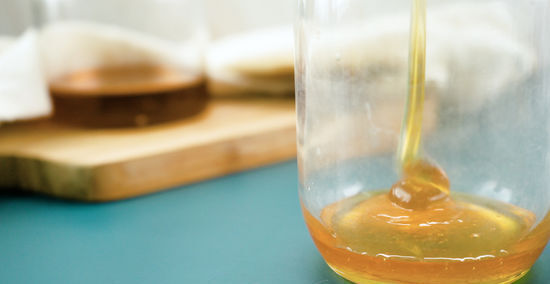
Scoop the honey into a glass jar if it isn’t already in one. You shouldn’t heat up plastic, so if your honey is in a plastic container, scoop it out and put it in a glass jar. If you’re having trouble getting the honey out of the plastic because it’s so crystallized, cut into the container with a pair of scissors. It doesn’t matter if you wreck the plastic bottle, because you’re moving the honey to a new container anyway.
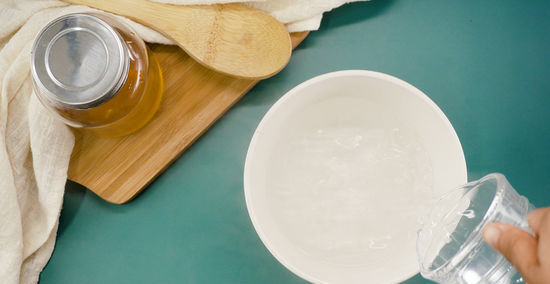
Warm up a bowl of water to 95 °F (35 °C). Heat up water so that it is warm, but not boiling. You can use the stove or the microwave to heat up the water, or just use the warm water from your tap. Check the temperature with a thermometer and add warm or cool water until it’s about 95 °F (35 °C). Higher temperatures will degrade the honey and caramelize the sugars.
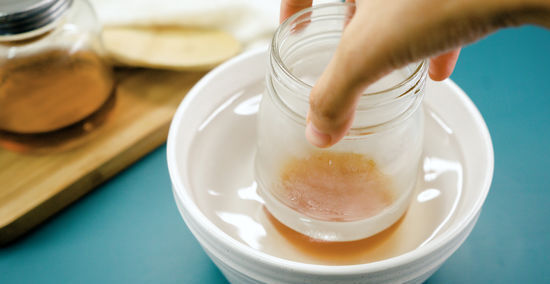
Place your honey jar in the bowl of water for 30 minutes. The water line should cover the honey but be below the lid, so that no water sneaks into the jar. Leave the jar in the water for about 30 minutes as the water cools and the honey warms. If the honey still not liquified after 30 minutes, warm up the water again and put the honey in for another half hour.
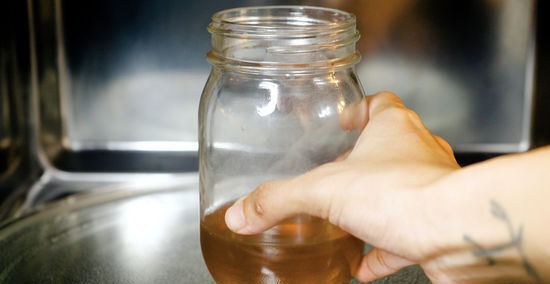
Avoid placing your honey in the microwave or directly on the stove. Microwaving your honey can destroy the beneficial enzymes. You should also avoid exposing your honey to direct flames, such as by putting it directly on the stove. If you do end up microwaving your honey, only put it in for 30 seconds at a time.
















Comments
0 comment